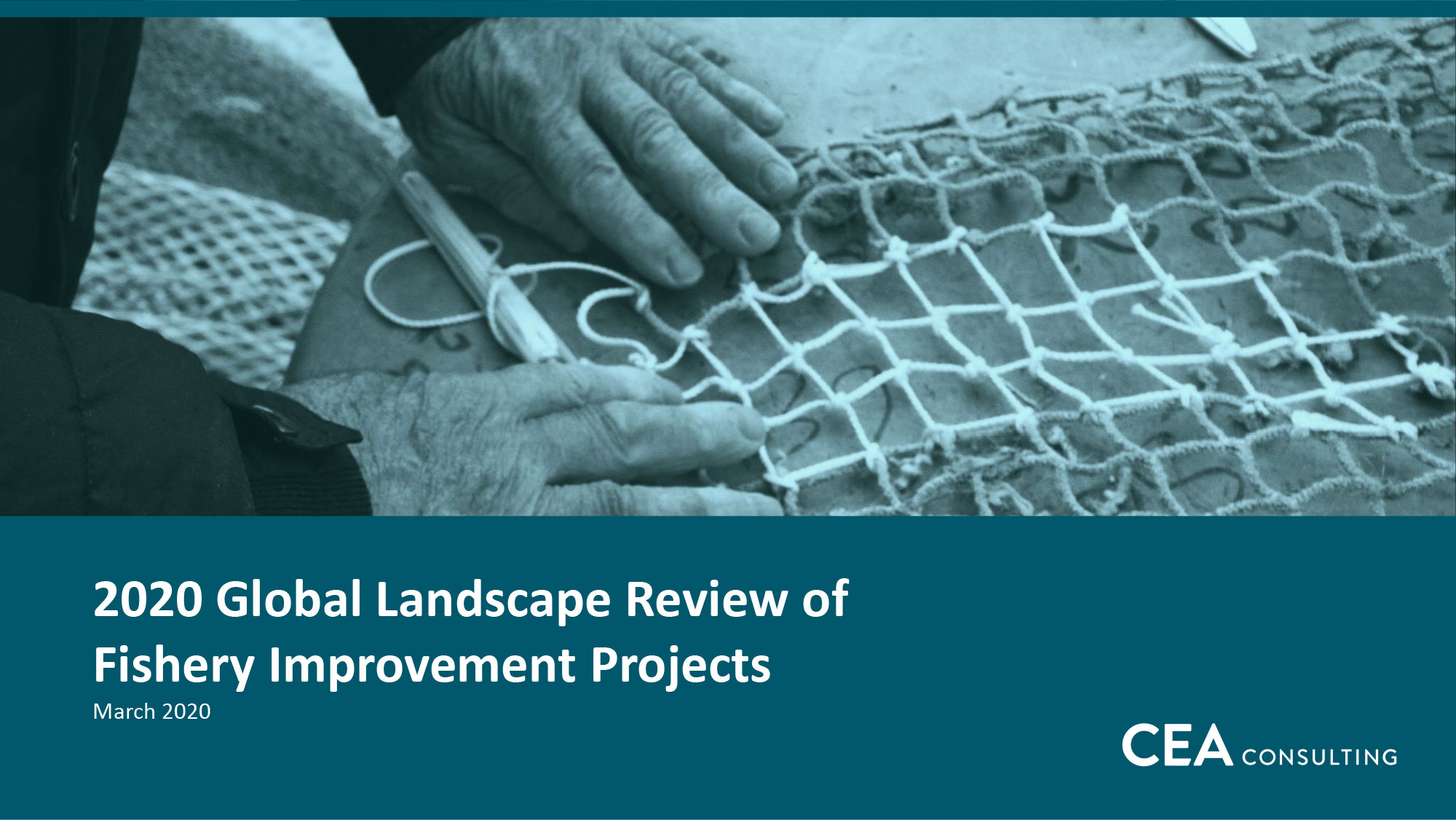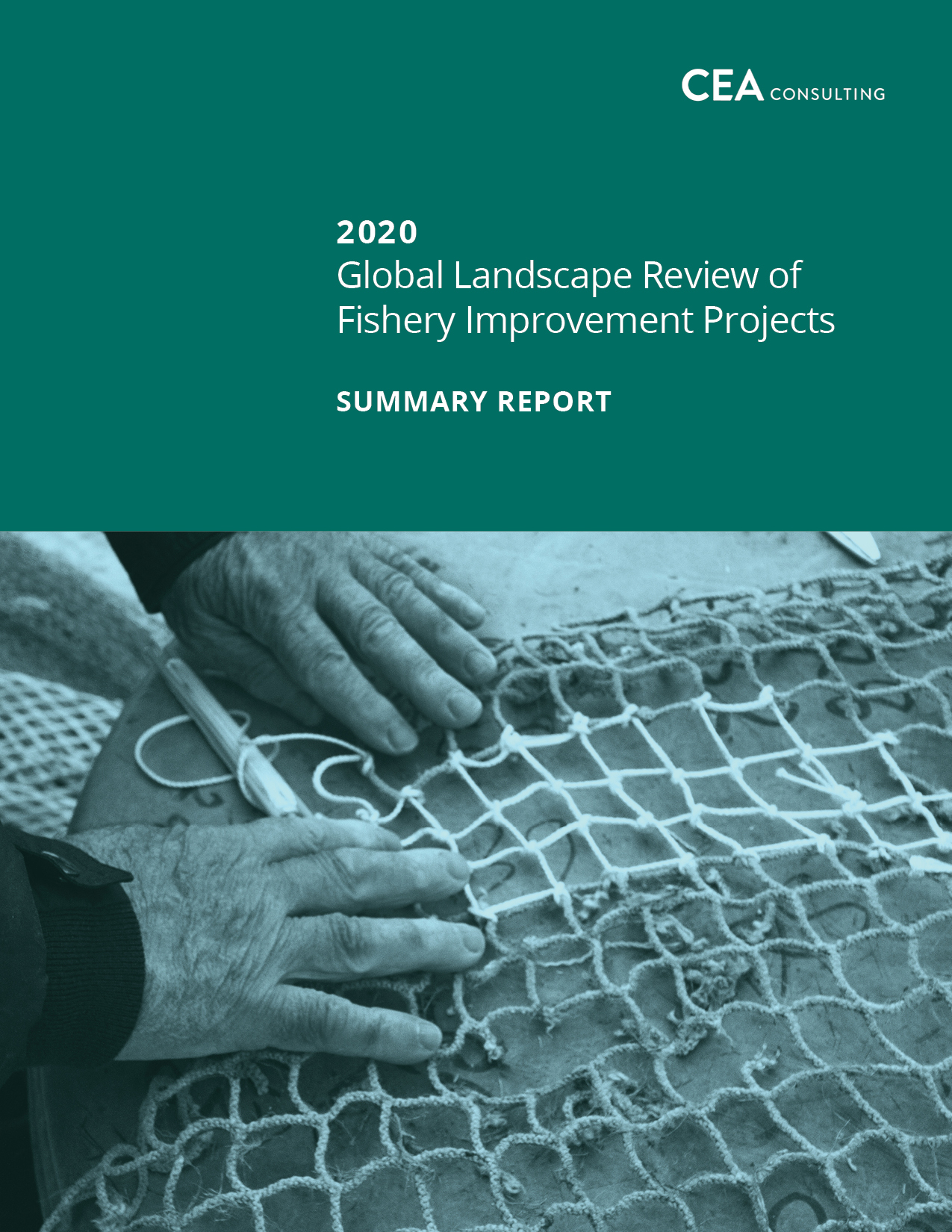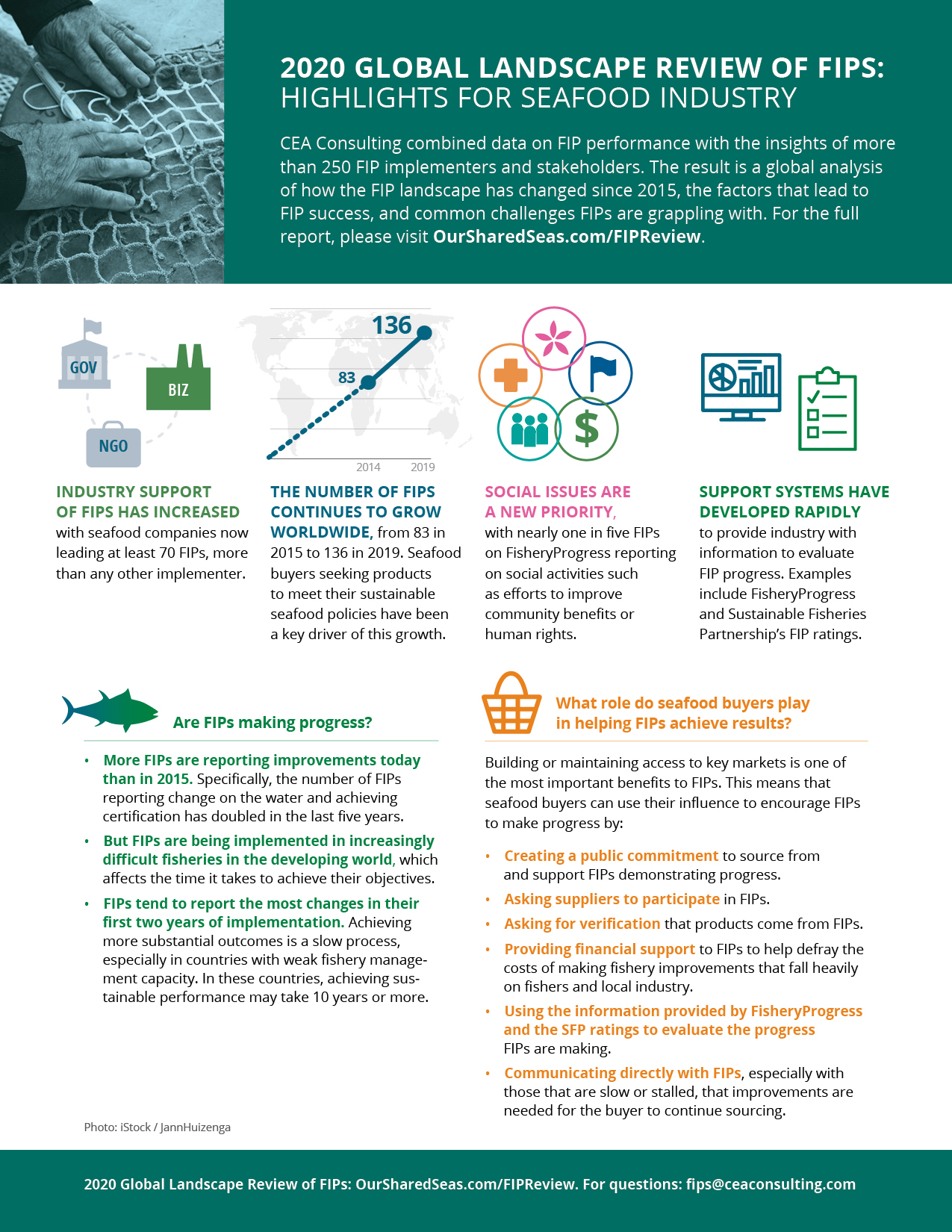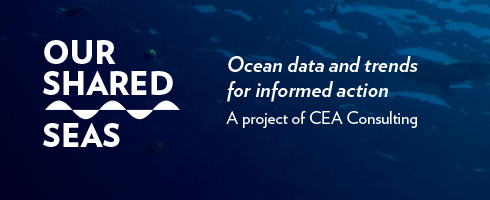
Photo: iStock / JannHuizenga
Over the past 15 years, fishery improvement projects (FIPs) have become the most widespread approach for using the leverage of the seafood industry to support fisheries on a path toward sustainability.
The Global Landscape Review of Fishery Improvement Projects combines data on FIP performance with insights from more than 250 FIP implementers and stakeholders. The result is a global analysis of how FIPs have grown and evolved since 2015, best practices that lead to success, and common challenges many FIPs are grappling with.
The David and Lucile Packard Foundation, Walton Family Foundation, and the Gordon and Betty Moore Foundation commissioned the report to understand the current state of FIPs worldwide and where action from the sustainable seafood movement could help to increase FIP impact. The report was authored by CEA Consulting, and builds on data and findings surfaced by CEA Consulting’s 2015 Global Landscape Review.
Below you can download the full report as well as detailed and high-level summaries, with forthcoming translations into several languages. To receive the translations once available, please sign up here.

- Full report:
- English

- Detailed summary
- for FIP implementers:
- This summary focuses on best practices that contribute to FIP success, contemporary challenges facing FIPs, market incentives that motivate FIPs, how FIPs advance fisheries management, and improvements beyond environmental impacts.
- English
- Spanish
- Japanese
- Bahasa Indonesia
- Chinese

- High-level summary
- for seafood industry:
- This summary includes top-level findings and a checklist businesses can use to assess best practices and challenges in FIPs they support.
- English
- Spanish
- Japanese
- Bahasa Indonesia
- Chinese
The report combines data on FIP performance with insights from more than 250 FIP implementers and stakeholders. Key findings include:
- The number of FIPs continues to grow worldwide, from 83 in 2014 to 136 in 2019. Seafood buyers seeking products to meet their sustainable seafood policies have been a key driver of this growth.
- Industry support of FIPs has increased, with seafood companies now leading at least 70 FIPs, more than any other implementer.
- FIPs are being implemented in increasingly difficult fisheries in the developing world, which affects the time it takes to achieve their objectives. In countries with weak fishery management capacity, achieving sustainable performance may take 10 years or more.
- Support systems, such as the website FisheryProgress and Sustainable Fisheries Partnership’s FIP ratings, have developed rapidly to provide industry with information to evaluate FIP progress.
If you have questions or feedback about the report, please contact CEA Consulting at FIPs@ceaconsulting.com.

